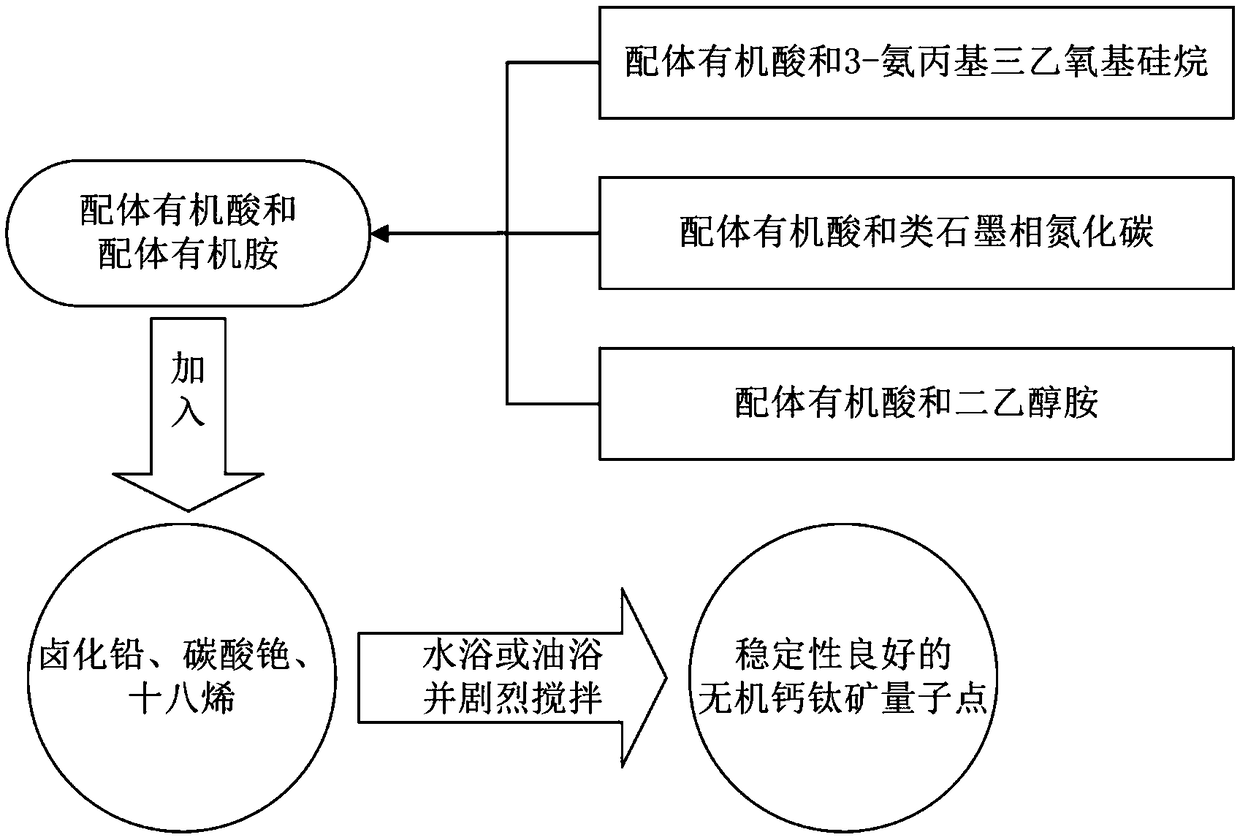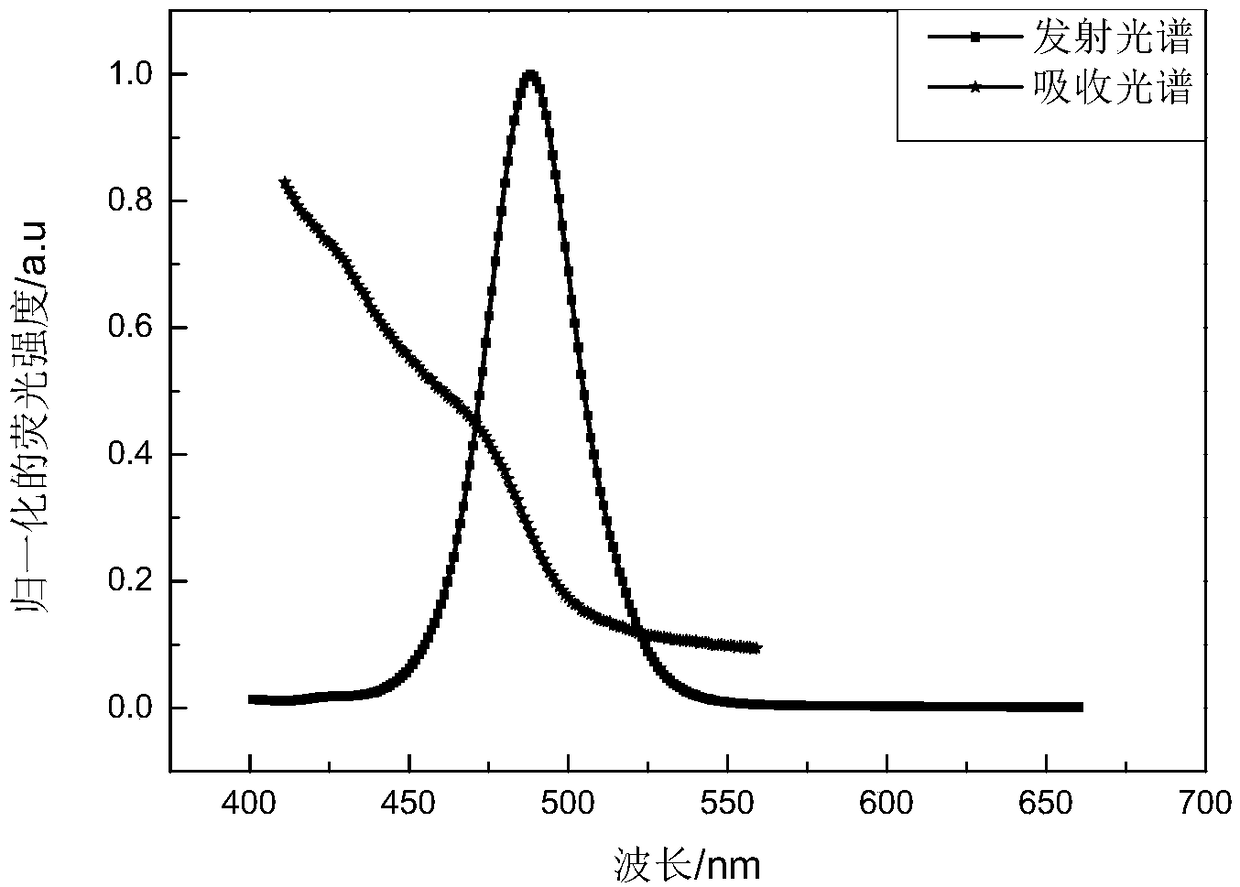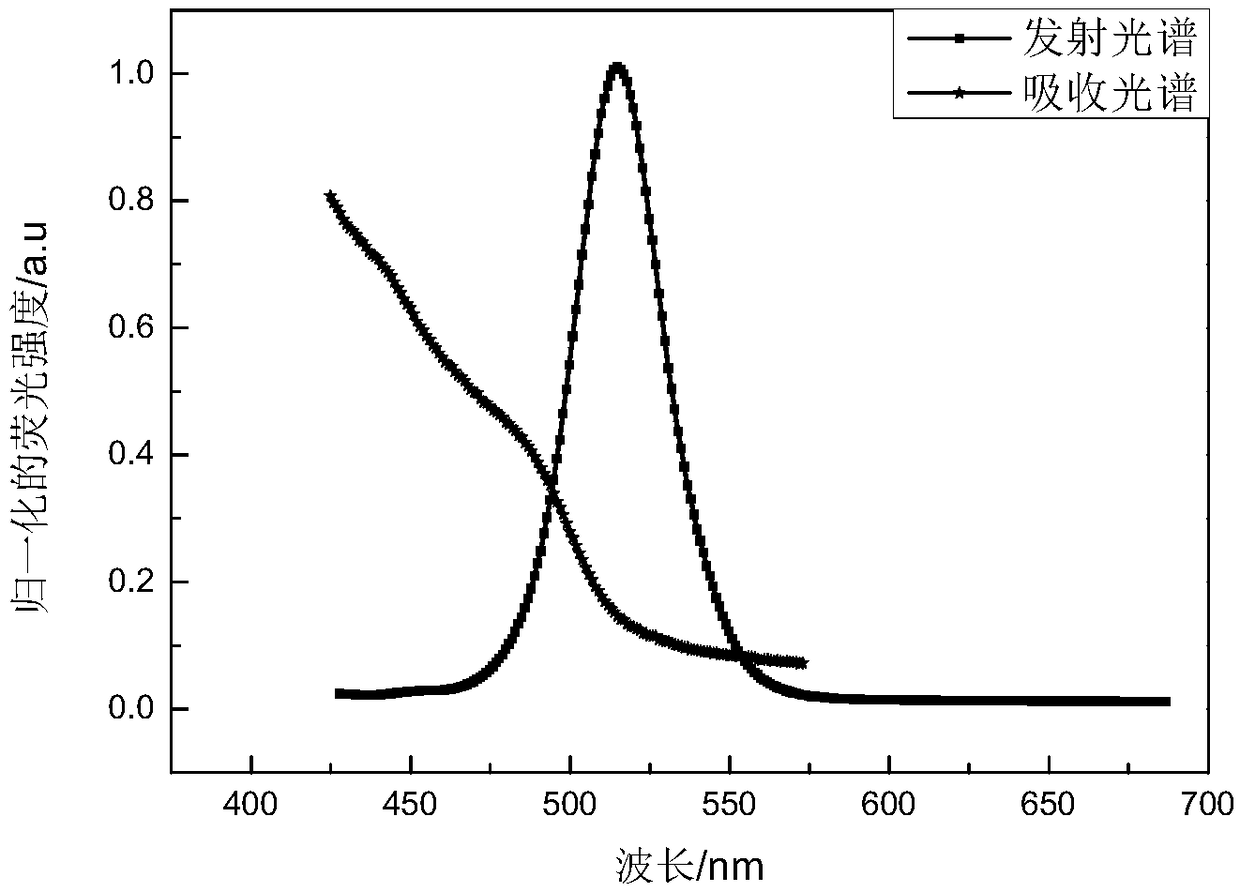Ligand adjustment-based perovskite quantum dot stability increasing method
A technology of quantum dots and stability, applied in the field of quantum dots, can solve problems such as application limitations, achieve the effects of less harsh reaction conditions, simple and convenient preparation methods, and improved polar solvent resistance and thermal stability
- Summary
- Abstract
- Description
- Claims
- Application Information
AI Technical Summary
Problems solved by technology
Method used
Image
Examples
Embodiment 1
[0039] At 25°C, use a balance to weigh 0.11g of PbBr 2 and 0.0326gCs 2 CO 3 Put the powder in a 25ml three-neck flask, use a 5ml needle to absorb 10ml of octadecene, use a 1ml small needle to absorb 0.5ml of oleic acid and 0.75ml of 3-aminopropyltriethoxysilane, turn on the magnetic stirrer at room temperature, the speed is 80rpm, Stir evenly until the upper solution is not stratified and the color is uniform;
[0040] Put the three-neck flask in a water bath at 80°C, heat it while stirring vigorously, gradually increase the speed to 100rpm, and the reaction time is 60min. The solution will appear light yellow in about 15 minutes, and irradiate with a 365nm ultraviolet lamp to emit blue light. After 30min, the solution has become yellow. After the reaction, place the system in an ice bath, wash the product with acetone to remove unreacted precursors and excess ligands, add n-hexane after centrifugation, shake to dissolve the precipitate, and vacuum dry to obtain inorganic c...
Embodiment 2
[0043] At 25°C, use a balance to weigh 0.11g of PbBr 2 and 0.0326gCs 2 CO 3 Put the powder in a 25ml three-necked flask, use a 5ml needle to absorb 10ml of octadecene, use a 1ml small needle to absorb 0.25ml of acetic acid, and weigh 0.05g of graphite-like carbon nitride (g-C 3 N 4 ), turn on the magnetic stirrer at room temperature, the rotating speed is 80rpm, and stir evenly until the upper solution is not stratified and the color is uniform;
[0044]Put the three-neck flask in a water bath at 90°C, heat it while stirring vigorously, gradually increase the rotation speed to 200rpm, and the reaction time is 40min. The solution appears light yellow in about 10 minutes, and emits blue light when irradiated with a 365nm ultraviolet lamp. After 20min, the solution has changed. into yellow. After the reaction, the system was placed in an ice bath for 5 seconds, and the product was washed with acetone to remove unreacted precursors and excess ligands. After centrifugation, n-h...
Embodiment 3
[0047] At 25°C, use a balance to weigh 0.11g of PbBr 2 and 0.0326gCs 2 CO 3 Put the powder in a 25ml three-neck flask, use a 5ml needle to absorb 10ml of octadecene, use a 1ml small needle to absorb 0.5ml of caprylic acid and 0.5ml of diethanolamine, turn on the magnetic stirrer at room temperature, and the speed is 80rpm, stir evenly until the upper layer solution is not stratified , the color is uniform;
[0048] Put the three-neck flask in a water bath at 90°C, heat it while stirring vigorously, gradually increase the speed to 200rpm, and the reaction time is 40 minutes. The solution will appear light yellow in about 10 minutes, and irradiate with a 365nm ultraviolet lamp to emit blue light. After 20 minutes, the solution has become yellow. After the reaction, the system was ice-bathed for 5 seconds, and the product was washed with acetone to remove unreacted precursors and excess ligands. After centrifugation, n-hexane was added, and after shaking to dissolve the precip...
PUM
 Login to View More
Login to View More Abstract
Description
Claims
Application Information
 Login to View More
Login to View More - R&D
- Intellectual Property
- Life Sciences
- Materials
- Tech Scout
- Unparalleled Data Quality
- Higher Quality Content
- 60% Fewer Hallucinations
Browse by: Latest US Patents, China's latest patents, Technical Efficacy Thesaurus, Application Domain, Technology Topic, Popular Technical Reports.
© 2025 PatSnap. All rights reserved.Legal|Privacy policy|Modern Slavery Act Transparency Statement|Sitemap|About US| Contact US: help@patsnap.com



